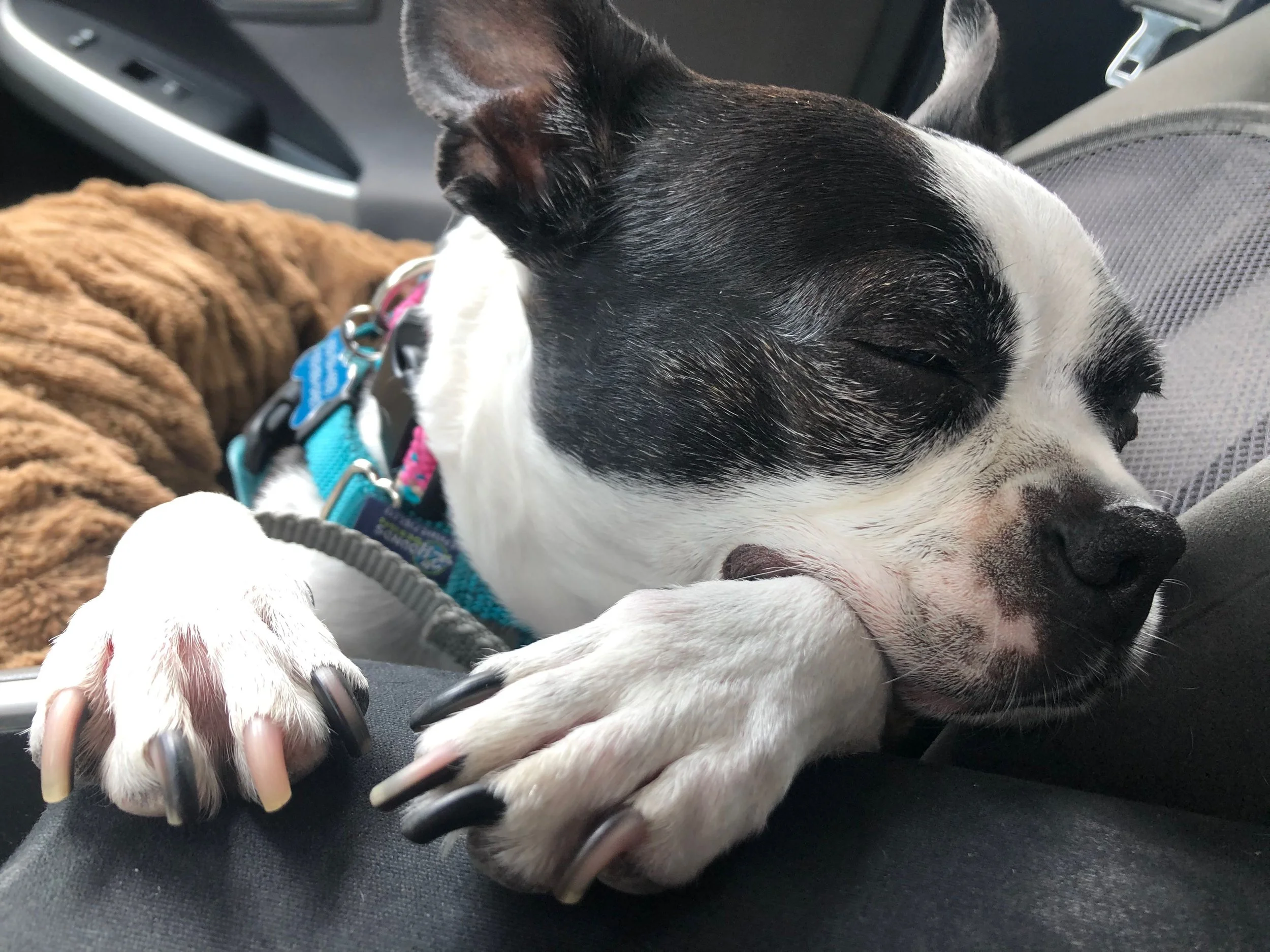In the still of night, the bed quaked; a mound under the bedcovers peeped, and I was pulled back from the ledge of dreams.
It happened again. And again. This was not a throwback to my four-year-old self: lying in a gurney, heart pounding beneath the hospital bedsheets, the nurses’ white-soled shoes scuffing the linoleum floors as I’m being wheeled to my tonsillectomy.
I lifted the covers. It was our Lilly, the Boston terrier, quaking and peeping behind closed eyes. Perhaps chasing some filament of day. Or burrowing a new behavior into her subconscious.
Science confirms that animals dream. Almost all mammals enter rapid eye movement (REM) sleep where dreams occur. Cold-blooded animals, such as reptiles, do not.
While dogs and cats are similar anatomically, humans tend to move less in their sleep due to interruptions of motor signals from structures within the pons (brainstem) to muscle groups in the extremities. This “filter” is less developed in other mammals, so we sometimes see jerky head movements or paws treading the air as our pets sleep.
In an archaic study that roused the ire of animal ethicists, the suspected structures in a cat’s brain that inhibit movement during sleep were surgically altered. Jouvet, et al (Lyon, France, 1958) showed that, in the absence of filtering “signals” between the brainstem and muscle groups, cats will act out their dreams in real time including hissing and pouncing on imaginary prey.
Pets may actually dream more than humans because they sleep so many more hours in a day (8-14 hours, more for younger puppies). They are also polyphasic sleepers meaning that they pepper their day with naps, about three hours worth. More naps mean more chances to enter REM sleep. Pets may enter REM sleep faster (20 minutes) than humans (90 minutes). Sleep habits vary depending on personality, age, breed, diet, health, and activity level.
Small dogs nap more than larger dogs since they enter REM sleep more frequently. Cats overall may dream more frequently than dogs.
Per Dr. Stanley Coren, Professor Emeritus of Psychology at the University of British Columbia and the author of Do Dogs Dream? Nearly Everything Your Dog Wants You to Know, size matters. Small dogs dream more frequently and their dreams are shorter; larger dogs dream less frequently, but their dreams are longer.
A pet’s dreams may reflect daily events or training. Since pet parents and fellow pets are the principal characters in their world, scientists theorize that these are the primary subjects of their dreams. REM sleep is also associated with memory and new learning. Many dreams are linked to novel experiences during the previous day.
Michael Louis and Kenway Louie (MIT, 2001) compared brain activity in awake and asleep rats. Recordings of brain activity during the day when rats weaved through a maze were strikingly similar to activity during REM sleep. Specifically, in the hippocampus which is linked to memory storage. Researchers were able to identify where in the maze the rats were in their dreams. They concluded that animals can have complex dreams and can remember and replay long sequences of events in their sleep.
University of Chicago Biologist, Daniel Margoliash, studies REM sleep in birds. He believes birds use the dream state to practice daily behaviors such as singing.
Sleep deprivation has debilitating affects on canine cognition and performance as it does in humans. Dogs getting a good night’s sleep following a day of concentrated learning are better able to integrate new skills and behaviors. They are also better adjusted and more emotionally stable.
While evidence appears to show that animals recall daily activities and “learn” while dreaming, it is unclear whether they experience novel scenarios in their dreams.
I’d love to believe that our Lilly could dream that no dog was a threat to her so she could more easily make friends.

